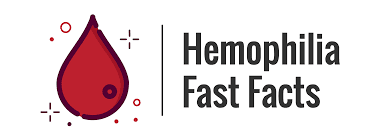Hemophilia is a bleeding disorder in humans. People with hemophilia B, the most common form of hemophilia, can’t stop bleeding or bruising easily. This can happen because they don’t have enough of a certain protein needed for blood to clot properly. Hemophilia can affect males and females. It’s passed on through families (inherited). Hemophiliacs can bleed excessively, even from minor cuts or bruises. They also have a higher risk of developing other disorders, such as excessive bleeding in the brain and chronic joint bleeding. Hemophilia is caused by a genetic defect that prevents certain proteins in the blood from working properly to prevent excessive bleeding.
Types of Hemophilia
It consists of two types of hemophilia: hemophilia A and hemophilia B. Hemophilia A is also referred to as factor VIII deficiency, whereas hemophilia B is referred to as factor IX deficiency. Hemophilia A is the most common kind of hemophilia, and it is caused by a genetic mutation on the X chromosome. Because males only have one X chromosome and females have two, males are more likely to be affected. Hemophilia B is a bleeding illness that is inherited. If you have hemophilia B, you can’t make enough of a clotting factor called factor IX. This missing clotting factor helps your blood coagulate (clot) to stop bleeding after an injury or surgery.
Symptoms of Hemophilia
Hemophilia symptoms include bleeding into the joints, muscles, and other soft tissues, as well as bleeding into the head or brain, internal bleeding, and blood in the urine. The degree of symptoms varies from individual to person. Approximately 40% of children who inherit one faulty gene do not show any signs or symptoms. Hemophilia is a condition in which your body is unable to effectively manufacture blood clots. Around 20,000 people in the United States are thought to have inherited hemophilia from their parents. Males are far more likely than females to be affected by hemophilia.
Causes of Hemophilia
It affects approximately one in every 5,000 births. The faulty gene can be inherited from one’s parents or can appear spontaneously as a novel mutation. Hemophilia usually strikes without warning, and there are no signs at birth or during childhood. Hemophilia is an inherited disorder, which means that it is passed down from parents to children: male children inherit the disorder from their mothers, and female children inherit the disorder from their dads. The most common cause of this disorder is an error in the genes during fertilization or the pregnancy growth period.
Treatment of hemophilia
Hemophilia affects around 20,000 people in the United States. People with hemophilia are treated with clotting factor replacement injections or factor infusions into a vein (intravenously). Hemophilia can be treated with clotting factor infusions or by substituting missing clotting factor proteins created in the lab. The goal of treatment is to keep your hemophilia under control so that you can live a normal life.
Prevention of Hemophilia
People with hemophilia have to take medicine as prevention before they get injured, so they can stop bleeding and heal quickly.
In conclusion
If you have hemophilia, it’s important to get treatment as soon as possible. You can learn more about how to manage your condition by checking out our comprehensive guide on Hemophilia. This guide has provided you with a comprehensive look at hemophilia. We hope this information helps equip you to care for your loved one who suffers from hemophilia.








